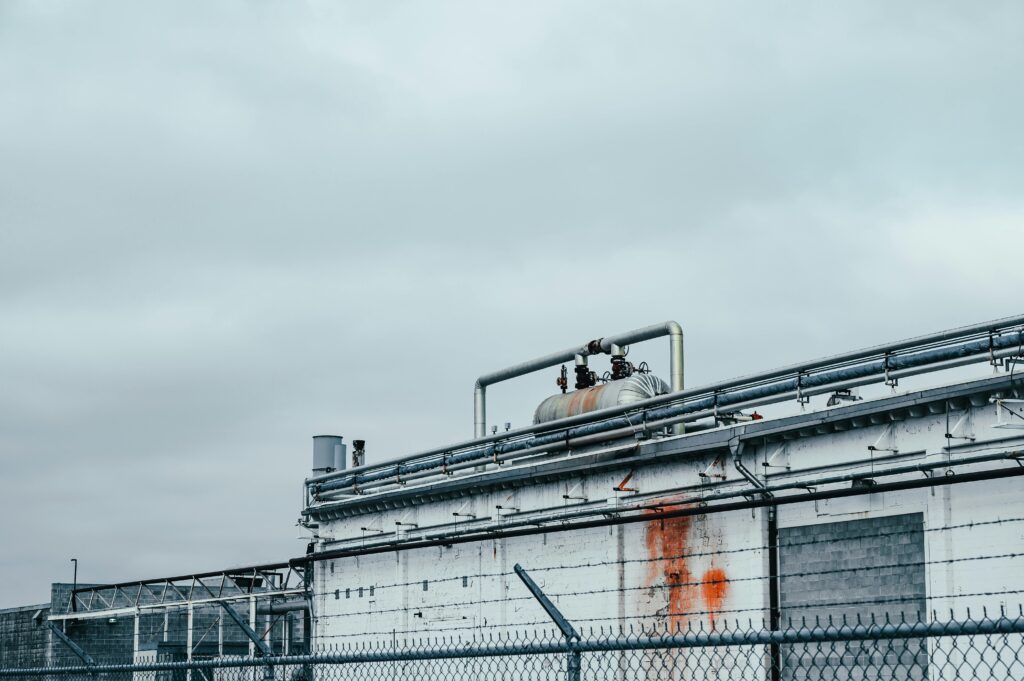Introduction
Choosing the right landfill and resource recovery facility is crucial for effective waste management. Not only does it ensure the proper disposal of waste, but it also helps in conserving the environment and resources. Let’s dive into the world of landfills and resource recovery facilities and understand how to make the best choice.
Understanding Landfill Facilities
Definition of Landfill Facilities
Landfill facilities are sites designed for the disposal of waste materials by burial. They are a crucial component of waste management systems, providing a method to handle waste that cannot be recycled or recovered.
Types of Landfills
Municipal Solid Waste Landfills
These landfills are used for the disposal of everyday waste from households, businesses, and institutions. They are the most common type of landfill.
Resource Recovery Facility
Designed specifically for industrial waste, these landfills handle materials such as construction debris, ash, and sludge.
Hazardous Waste Landfills
These facilities are equipped to handle dangerous waste that requires special disposal methods to prevent environmental contamination.
Understanding Resource Recovery Facilities
Resource recovery facilities are an essential part of modern waste management systems, aiming to minimize waste and maximize the reuse of materials. These facilities focus on extracting valuable materials from waste streams and converting them into usable products or energy. Let’s explore what these facilities are, the types available, and their benefits.
Definition of Resource Recovery Facilities
Resource recovery facilities are specialized plants designed to process waste materials and recover resources that can be reused or repurposed. The primary goal is to reduce the amount of waste that ends up in landfills and to promote a more sustainable approach to waste management.
Types of Resource Recovery Facilities
There are several types of resource recovery facilities, each serving a unique purpose in the waste management process:
Materials Recovery Facilities (MRFs)
Materials Recovery Facilities, commonly known as MRFs, are designed to sort and process recyclable materials. These facilities receive mixed recyclables and use various technologies to separate materials like paper, plastic, metal, and glass. The sorted materials are then baled and sold to manufacturers who use them to create new products.
Resource Recovery Facility
Waste-to-Energy (WTE) plants convert non-recyclable waste into energy. These facilities typically use incineration to burn waste and generate electricity or heat. The energy produced can be used to power homes, businesses, or even the facility itself. WTE plants help reduce the volume of waste sent to landfills and provide a renewable source of energy.
Composting Facilities
Composting facilities process organic waste, such as food scraps and yard trimmings, into compost. Composting is a natural process where microorganisms break down organic material into a nutrient-rich soil amendment. This compost can be used to improve soil health and fertility, making it a valuable resource for agriculture and landscaping.

Benefits of Resource Recovery Facilities
Resource recovery facilities offer numerous environmental, economic, and social benefits:
Environmental Benefits
- Reduction of Landfill Use: By diverting waste from landfills, resource recovery facilities help extend the life of existing landfills and reduce the need for new ones.
- Lower Greenhouse Gas Emissions: Facilities like WTE plants reduce methane emissions from landfills and decrease the reliance on fossil fuels.
- Conservation of Resources: Recycling and composting conserve natural resources by reducing the need for raw materials.
Economic Benefits
- Cost Savings: Resource recovery can reduce disposal costs and generate revenue from the sale of recovered materials and energy.
- Job Creation: These facilities create jobs in waste processing, recycling, and energy production.
Social Benefits
- Community Engagement: Resource recovery initiatives often involve community education and participation, promoting environmental awareness and responsibility.
- Healthier Environment: Reducing waste and emissions contributes to a cleaner and healthier environment for communities.
Challenges and Considerations
While resource recovery facilities provide many benefits, they also face challenges that need to be addressed:
- Contamination: Proper sorting and reducing contamination in recyclables are crucial for the efficiency of MRFs.
- Initial Investment: Setting up resource recovery facilities requires significant capital investment.
- Public Participation: Successful resource recovery depends on public awareness and participation in recycling and composting programs.
Key Factors in Choosing a Landfill Facility
Proximity to Your Location
Choosing a nearby landfill reduces transportation costs and environmental impact.
Types of Waste Accepted
Ensure the facility can handle the specific types of waste you need to dispose of.
Environmental Impact
Consider the facility’s environmental practices, such as measures to prevent leachate and methane emissions.
Regulatory Compliance
Verify that the landfill complies with all relevant regulations and has the necessary permits.
Key Factors in Choosing a Resource Recovery Facility
Types of Resource Recovery Facility
Different facilities specialize in recovering different materials. Choose one that aligns with your waste stream.
Efficiency of Resource Recovery Facility
Look for facilities with high recovery rates and efficient processing methods.
Environmental Benefits
Resource recovery facilities can significantly reduce landfill use and greenhouse gas emissions.
Cost of Services
Compare the costs of different facilities to find one that offers good value for money.
Comparing Landfill and Resource Recovery Options
Environmental Considerations
Resource recovery facilities generally have a lower environmental impact compared to landfills.
Cost-Effectiveness
While resource recovery can be more expensive upfront, it often provides long-term cost savings through reduced disposal fees and material recovery.
Long-Term Sustainability
Resource recovery supports sustainable waste management by reducing reliance on landfills and promoting recycling and reuse.
Case Studies
Successful Landfill Management Examples
Highlight examples of well-managed landfills that have implemented innovative solutions to reduce environmental impact.
Effective Resource Recovery Programs
Discuss programs that have successfully diverted waste from landfills and recovered valuable resources.
Regulations and Compliance
Local and National Regulations
Understand the regulations governing waste management in your area to ensure compliance.
Certification and Licensing Requirements
Check that facilities have the necessary certifications and licenses to operate legally and safely.

Environmental Impact and Sustainability
Reducing Carbon Footprint
Both landfills and resource recovery facilities can implement practices to reduce their carbon footprints.
Promoting Recycling and Reuse
Resource recovery facilities play a key role in promoting recycling and the reuse of materials, reducing overall waste generation.
Technological Advances in Waste Management
In recent years, technological advancements have significantly transformed the waste management industry, making it more efficient, sustainable, and effective. These innovations range from smart waste collection systems to advanced recycling technologies, all aimed at reducing the environmental impact of waste and improving resource recovery. Here, we explore some of the key technological advances in waste management.
Smart Waste Collection Systems
IoT-Enabled Sensors
Internet of Things (IoT) technology has revolutionized waste collection by integrating smart sensors into waste bins. These sensors monitor the fill levels of bins in real-time and send data to waste management operators. This enables more efficient collection routes, reducing fuel consumption and emissions by optimizing the timing and frequency of collections.
Automated Waste Collection Vehicles
Automated waste collection vehicles equipped with robotic arms and cameras can identify and pick up waste bins without manual intervention. This not only speeds up the collection process but also enhances worker safety by reducing their exposure to hazardous materials.
Advanced Recycling Technologies
Optical Sorting Systems
Optical sorting systems use advanced cameras and sensors to identify and sort recyclable materials based on their type and color. These systems can differentiate between various plastics, metals, and paper, significantly increasing the efficiency and accuracy of recycling processes.
Artificial Intelligence (AI) and Machine Learning
AI and machine learning algorithms are being used to improve the sorting and processing of recyclable materials. These technologies can analyze large datasets to optimize sorting operations, predict maintenance needs, and improve the overall efficiency of recycling facilities.
Chemical Recycling
Chemical recycling is an emerging technology that breaks down plastic waste into its chemical components, which can then be reused to produce new plastics. This process allows for the recycling of plastics that are difficult to recycle mechanically, expanding the range of materials that can be recovered and reused.
Waste-to-Energy Technologies
Anaerobic Digestion
Anaerobic digestion is a process that breaks down organic waste in the absence of oxygen to produce biogas, a renewable energy source. This technology is particularly useful for managing food waste and other organic materials, converting them into energy and nutrient-rich digestate that can be used as fertilizer.
Plasma Gasification
Plasma gasification uses high-temperature plasma to convert waste into synthetic gas (syngas), which can be used to generate electricity or produce fuels. This technology can handle a wide variety of waste types and significantly reduces the volume of waste that needs to be landfilled.
Pyrolysis
Pyrolysis involves heating waste materials in the absence of oxygen to produce bio-oil, syngas, and char. This technology is particularly effective for converting plastic waste into useful products, providing an alternative to traditional incineration methods.
Resource Recovery Facility Innovations
Product as Resource Recovery Facility
The Product as a Service model promotes the idea of using products through leasing or subscription services rather than outright ownership. This encourages manufacturers to design products that are durable, repairable, and recyclable, reducing waste and promoting a circular economy.
Blockchain Resource Recovery Facility
Blockchain technology can be used to create transparent and traceable waste management systems. By recording every transaction and movement of waste materials on a blockchain, it becomes easier to track compliance, reduce fraud, and ensure that recyclable materials are properly processed.
Robotics and Automation
Robotic Sorters
Robotic sorters equipped with AI and advanced sensors can identify and separate recyclable materials from waste streams with high precision. These robots can work alongside human workers or in fully automated recycling facilities, increasing efficiency and reducing labor costs.
Automated Composting Systems
Automated composting systems use sensors and controls to optimize the composting process, ensuring the right conditions for microbial activity. These systems can handle large volumes of organic waste and produce high-quality compost in a shorter time frame.

Big Data and Analytics
Predictive Analytics
Predictive analytics uses historical data and machine learning algorithms to forecast waste generation patterns and optimize waste management strategies. This can help cities and waste management companies plan for future needs and reduce operational costs.
Resource Recovery Facility
Real-time monitoring systems provide up-to-date information on waste collection, processing, and disposal activities. This data can be used to identify inefficiencies, monitor compliance, and improve overall waste management operations.
Community Involvement and Education
Importance of Public Awareness
Educating the public about waste management practices is essential for successful landfill and resource recovery operations.
Educational Programs and Resources
Support for community education programs can enhance public participation in recycling and proper waste disposal.
Cost Considerations
Budgeting for Resource Recovery Facility
Plan your waste management budget to accommodate the costs associated with landfill use and resource recovery.
Resource Recovery Facility Different Facilities
Conduct a cost comparison to determine the most economical choice for your waste management needs.
Making the Final Decision
Evaluating All Factors
Consider all factors, including environmental impact, cost, and regulatory compliance, to make an informed decision.
Tips for Making an Informed Choice
Seek advice from waste management professionals and conduct thorough research before choosing a facility.
Future Trends in Waste Management
The waste management industry is continuously evolving, driven by technological advancements, environmental concerns, and changing regulations. As we look to the future, several emerging trends are set to transform how we handle waste, promoting sustainability and efficiency. Here are some key future trends in waste management.
1.Resource Recovery Facility
The concept of a circular economy is gaining traction as a sustainable alternative to the traditional linear economy. In a circular economy, waste is minimized, and materials are kept in use for as long as possible through recycling, reusing, and repairing. This approach reduces the need for raw materials, lowers environmental impact, and creates economic opportunities.
Extended Producer Responsibility (EPR)
Extended Producer Responsibility is a policy approach where producers are held accountable for the entire lifecycle of their products, including disposal. EPR encourages manufacturers to design products that are easier to recycle and have a lower environmental impact.
Product Life Extension
Designing products with longer lifespans, easier repairability, and upgradability can significantly reduce waste. Companies are increasingly focusing on creating durable products that can be easily disassembled and repurposed at the end of their life.
2. Zero Waste Initiatives
Communities and businesses are adopting zero waste goals, aiming to eliminate waste sent to landfills and incinerators. Zero waste initiatives focus on reducing waste generation, increasing recycling and composting, and encouraging sustainable consumption patterns.
Waste Reduction Programs
Programs that promote waste reduction at the source, such as banning single-use plastics and encouraging bulk purchasing, are becoming more common. These programs aim to minimize waste generation and reduce the burden on waste management systems.
Resource Recovery Facility
Engaging communities in zero waste initiatives through education, outreach, and incentives is crucial for their success. Public awareness campaigns and community involvement can drive behavior change and increase participation in waste reduction efforts.

3. Advanced Recycling Technologies
Recycling technologies are becoming more sophisticated, enabling the recovery of a wider range of materials and improving the efficiency of recycling processes.
Chemical Recycling
Chemical recycling processes break down plastics and other materials into their basic chemical components, which can then be used to produce new materials. This technology can handle mixed and contaminated waste streams, expanding the range of materials that can be recycled.
AI and Machine Resource Recovery Facility
Artificial intelligence and machine learning are being used to improve sorting and processing at recycling facilities. These technologies can enhance the accuracy and speed of material identification, reducing contamination and increasing the quality of recycled materials.
4. Decentralized Waste Management
Decentralized waste management systems focus on managing waste at a local level, reducing the need for large-scale waste transportation and centralized facilities.
Resource Recovery Facility
Community composting programs enable residents to compost their organic waste locally, reducing the amount of waste sent to landfills and producing valuable compost for gardens and landscapes.
Local Recycling Centers
Setting up small-scale recycling centers in communities can improve access to recycling services and increase recycling rates. These centers can handle specific types of waste, such as electronics or textiles, and provide education and resources to residents.
5. Waste-to-Energy Innovations
Waste-to-energy technologies are evolving, offering new ways to convert waste into renewable energy sources.
Biogas Production
Biogas production through anaerobic digestion is becoming more popular for managing organic waste. The biogas produced can be used to generate electricity, heat, or fuel, providing a renewable energy source and reducing greenhouse gas emissions.
Advanced Thermal Conversion
Technologies like pyrolysis and gasification are being refined to convert waste into syngas, bio-oil, and other valuable products. These processes offer a cleaner and more efficient alternative to traditional incineration.
6. Resource Recovery Facility
The integration of digital technologies in waste management is enhancing efficiency, transparency, and decision-making.
IoT and Resource Recovery Facility
IoT-enabled smart sensors are being used to monitor waste bins, track waste collection vehicles, and optimize waste management operations. These sensors provide real-time data that can be used to improve efficiency and reduce costs.
Blockchain for Waste Tracking
Blockchain technology offers a transparent and secure way to track waste from its source to disposal. This can help ensure compliance with regulations, reduce fraud, and improve accountability in waste management systems.

7. Sustainable Packaging Solutions
Innovations in packaging design and materials are reducing the environmental impact of packaging waste.
Biodegradable and Resource Recovery Facility
Biodegradable and compostable packaging materials are being developed to replace traditional plastics. These materials break down more easily in the environment, reducing pollution and waste.
Resource Recovery Facility
Companies are focusing on reducing the amount of packaging used for products, opting for minimalistic designs and reusable containers. This trend helps decrease the volume of packaging waste generated.
Conclusion
Choosing the right landfill and resource recovery facility is a critical decision for effective waste management. By considering factors such as environmental impact, cost, and regulatory compliance, you can make an informed choice that benefits both your community and the environment.
FAQs
What is the difference between a landfill and a resource recovery facility ?
A landfill is a site for the disposal of waste materials by burial, while a resource recovery facility extracts valuable materials from waste for reuse or energy production
.How do I know if a facility complies with regulationsResource Recovery Facility?
Check for certifications, permits, and compliance records to ensure the facility meets all regulatory requirements.
What are the environmental benefits of resource recoveryResource Recovery Facility
Resource recovery reduces landfill use, lowers greenhouse gas emissions, and promotes recycling and reuse, contributing to a more sustainable waste management system
.Are there cost benefits to using a resource recovery facility over a landfill Resource Recovery Facility?
While resource recovery can be more expensive initially, it often provides long-term savings through reduced disposal fees and material recovery
.How can I find the nearest landfill or resource recovery facility?
Use online directories, contact local waste management authorities, or consult with waste management professionals to locate nearby facilities.

1 thought on “How to Choose the Right Landfill and Resource Recovery Facility best in 2024”